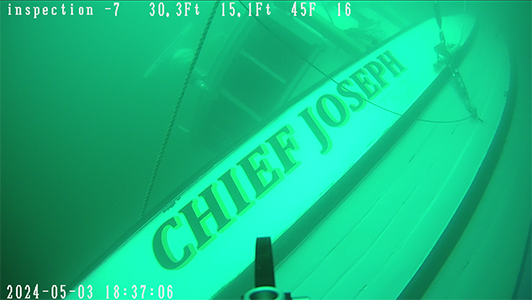UPDATED JULY 14, 2021
||| BY MATTHEW GILBERT, theORCASONIAN OP-ED REPORTER |||
After a public hearing on July 12, the County Council unanimously approved an amended extension of the vacation rental moratorium that now includes “findings of fact” and a work plan. The new deadline is January 13, 2022, and the moratorium will continue to be limited to UGAs, Hamlets, and Activity Centers countywide. A proposal by Cindy Wolf to add Rural Residential – Orcas had legal issues, according to Deputy Prosecuting Attorney Amy Vera, who noted that any such designation would need to apply to the entire county. The approval of the extension and the workplan (see Resolution No. 16-2021) will likely be victory enough for supporters.
More of the Same, and Then Some
The nearly two-hour hearing featured 40+ comments – some of them quite passionate – that, again, broke clearly along island lines. All but one on San Juan Island spoke against the extension; all but two from an equal number of Orcas residents spoke in favor. Of the half-dozen callers from Lopez, all but one supported the extension. A handful of callers were on the fence. The voices of local businesses, more specifically the real estate and construction industries, were conspicuously absent – although it was pointed out that the timing of the hearing made it hard for some folks to attend.
While there is little that hasn’t been said about the issue, which has prompted plenty of sometimes heated debate, conflicting metrics, and sky-is-falling rhetoric, several patterns and conclusions seemed to solidify from the mostly tech-glitch-free morning:
-
- County staff simply need more time to look at the issue. Work on the Comp Plan keeps filling most of their in-trays, while the Planning Commission, which has a keen interest in what happens with vacation rentals, is eager to take a closer look.
- The link between the growth of vacation rentals and the disappearance of affordable housing (or any housing, for that matter) was again challenged, with a general acknowledgement that VRs are only one of several influences, and possibly not the biggest. Affordable housing is a stand-alone issue that requires more study – or maybe less study and more solutions, or maybe more study of solutions.
- Concerns over caps on the total number of vacation rentals remains a flashpoint, even as those with legal permits aren’t threatened. Decisions on those caps – if agreement is reached – can be made before the moratorium ends.
- The uneasy alliance – and occasional conflict – between tourism, the economy, and community “quality of life” will not disappear anytime soon. As one caller pointed out, “We don’t have a crisis of not enough tourists, but we do have a crisis of housing and stress on the environment.” No one is suggesting that the answer is pulling the plug on tourism, but something akin to “sustainable tourism” might be worth a look.
- The challenge of balancing more immediate individual/economic needs (e.g., vacation rentals as a legitimate source of income, stoking the tourism engine) with long-term, cumulative impacts on community, infrastructure, and the environment is becoming more acutely felt. Conversations around “carrying capacity” and how it’s measured will hopefully become more frequent.
Is the Fork in the Road Behind Us?
Quarter 2 sales and lodging tax data (February to April) confirm that the County’s post-pandemic economy has continued to explode. Countywide, lodging taxes were up 85% compared to 2019 – not 2020 – and nearly tripled on both San Juan and Lopez. Orcas Island figures from 2019 were already 20% higher than 2018. Sales tax revenue is up 35%. Updated figures for new residential housing permits are not yet available, but the year had a robust start.
These numbers are not surprising as pandemic withdrawal has led to exuberant liberation and economic resurrection. But it hasn’t been a smooth transition. (See also “Maui tourist surge raises tensions . . .”) The real question is what will next year look like, and the one after that, and the one after that. Is this the county’s new normal? Likely not, given the truly unprecedented numbers, but growth begets growth. The Comp Plan is being updated based on modest population projections. But are they too modest? Back in 2017, the population of the county was estimated to be 19,243 by 2036 – the planning horizon for the Comp Plan – based on an average yearly increase of less than 1%. Will those figures stand up against what could be a changing growth curve?
The county has spent plenty of time “managing” for growth and precious little time discussing the merits and challenges of “controlling” growth (such as caps on VRs) – a tougher conversation. An argument can be made that the pandemic may have solved that dilemma for us, accelerating the county’s fate.
Clarification (071421): Cindy Wolf’s original amendment proposal was to add Rural Residential for the entire county to the moratorium extension. It was opposed by the other two council members.









Does this mean that we readers will spared endless posts about VR’s and the evils of tourism for 6 months? Can the Orcasonian implement a moratorium on VR postings to match? That might allow for a little healing in the community where some people actually favored allowing outsiders to come to spend money…
This is, mostly, good news. Thank you county council. And, thank you Mathew… myself being one of those who couldn’t make the meeting because of work.
“Is this the county’s new normal?” Hopefully not. The old normal was already one that measured success by whether or not the county’s current numbers superceded the previous year’s (record-breaking) numbers. There’s a lot of much needed data missing from the analysis, and we can only be effective if we’re fully resourced. Nobody said this was going to be easy.
“There is no power for change
greater than a community
discovering what it cares about.”
— Margaret J. Wheatley
I’m interested to know to whom is the following excerpt from this story attributed: “The approval of the extension and the workplan (see Resolution No. 16-2021) will likely be victory enough for supporters.” Not to this supporter.
Failure to include any of the rural landscape in this moratorium will only hasten it’s development and simply exacerbate the challenge SJC faces in order to comply with the WA State GMA in its efforts to update our Comprehensive Plan. If memory serves, compliance of our existing CP was only achieved by SJC’s adoption of a policy whereby there would be a 50/50 split between development in rural areas and development within its UGAs and Activity Centers.
Talking about the “evils of tourism,” Neil, have you tried to get a ferry reservation on weekends recently? Or experienced the mounting delays? We are currently at the very limits of what the ferry system can cope with. And according to a member of the ferry advisory committee I know, things are not going to get better for at least a decade. They will only get worse as the tourist floods return.
Michael, isn’t that exactly what islanders want? If there are no reservations available on the ferry it means the number of visitors has been capped and that’s exactly what people keep saying they want. I have written repeatedly about how the ferry is the real determinant of island population. It’s the blood supply, and if you don’t want the cancer of tourism to grow, cut off the blood supply! The only thing else I would advise is to demand that say 80% (pick a number) of ferry slots be only for permanent residents of Orcas (people who are there at least 300 days/year) and set up a check in/out system at the ferry so you will always know who/when the real residents come and go. Yes, there are places that do this already. That would assure the only “deserving” people get the boat space they need and relegates tourists and second home owners to a lower class which seems to be consistent with the desires of Orcasonians.
That sounds too extreme but I doubt you’re being completely serious, Neil. How do you determine who is “deserving” and who is not? But islanders should not have to cancel or postpone medical appointments because they cannot get ferry reservations.
Neil, as someone who does not live here, you continue to weigh in on what we, Orcansonians, think and want. Like all places, we are a diverse group of people with wide ranging thoughts, beliefs and desires. One thing we are united around though is each other. Our love for our community is loyal and strong. We are always there for each other whether you were raised here or just found yourself here. Your comments about us, our beliefs and our ferries are broadly generalized and lack depth and understanding of our way of life.
Ed, I appreciate that you want to cancel me because I don’t live there yet. We made offers on 4 homes, but were outbid each time. But, the idea that the community love is loyal and strong is why we wanted to move there. Of course if you read the posts here I think an honest interpretation is that Orcas is much like the rest of the USA and extremely divided, but with a Blue majority. Of course, the popular vote and Council vote on issues makes clear where the islanders stand “at the end of the day.” I think we call that democracy, and the majority view on tourists, vacation rentals, second home owners, ferry service, street lights, Prune Ally, development, etc. are pretty clear. Most of us are narcissistic enough that we want to think we can’t be lumped in with any others because we are unique, but that’s pretty unrealistic as well. But, I do get that you want me to go away and would prefer to cancel my novel, “out of the box ideas” to problems. BTW, I’d be interested in knowing what I got wrong about ferries? I presumed that people want easy access to ferries at the lowest charge possible, shortest wait times possible, easy reservations, regular, frequent, and reliable schedules, skilled professionals operating them, great food, and smooth seas. So why are you claiming my comments about what most islanders want in a ferry system is off base? I have great respect for my friends on Orcas, many of whom tell me to keep posting and continue to encourage us to move there, but are afraid to say what I do because they live there and fear retribution and being ostracized by the loyal community you believe is the real Oracs. Why then are some afraid to speak up and be thus pariahs?
Fred–Just a note: the GMA requires the County to “plan” for 50% of population growth in urban growth areas (or towns, in the case of San Juan I., I suppose) and 50% for rural areas. Of course, the County has no control over where land is sold or developed beyond the already fairly strict zoning of rural land and the continued use of various incentives to develop in the UGA.
I don’t know Neil, but I do suspect he’s trying to make a point through overstatement, although I have heard various folks use the word “deserve” in analyzing who can or should live here and who deserves housing here and who deserves to ride the ferry. A tricky approach. But for tourism, many people would have no jobs. Are we willing to eliminate some of them? But for “second home” owners, our County taxes would be much higher. Would we miss the subsidy? We need to get some sort of consensus about what we want for our community, which includes many extended families who call Orcas home in the summer and have for many decades, as well as people who are planning to move here permanently but have not yet the ability to do so. (I believe that Neil falls in the latter category, which explains his keen interest.)
I would like to thank Neil for bringing up the issue of ferry capacity. Our ferry fleet is aging. There are no reserve ferries for replacing a ferry with mechanical problems. The crewing situation has become dysfunctional. Sailings are routinely cancelled for lack of crew. Ken Burtness is a retired ferry captain who serves on the Ferry Advisory Committee. He says that the situation will not improve for at least 10 years. The ferry service could well continue to deteriorate as our fleet ages (I can relate as an aging human). The Tillicum, our inter-island ferry, is the oldest ferry in the fleet.
Yet our County Councils for years have decided that planning for population growth need not consider the ferries as a potential limitation. Well, the limits have arrived.
Our county planning department is currently recommending that a significant portion of Forest Resource Lands be reclassified to allow a greater density of dwelling units. The current proposal limits the building growth to only allowing for guest houses, but I know from our county government’s history that the allowed building density in these forests will increase as individual owners appeal the restrictions.
The attitude is “just one more house will not matter”, but over time the ultimate “build out” capacity increases.
It is time that we pause and ask ourselves, “Are there limits to population growth in our islands?” What are the consequences of following “business as usual”?
Please tell our county councilors that they should not approve changing the development potential for a subset of our Forest Resource Lands.
Janet Alderton. Thank you for the heads up regarding consideration of changes to Forest Resource Lands reclassification. In all our considerations, we must protect the arboreal cover and, yes, even reverse the current deforestation. In his book, A LIFE ON OUR PLANET, David Attenborough suggests ‘rewilding’ the earth as one very important step away from global warming. Is this related to our ‘tourism’ issues? Yes. A first premise to community land planning must be DO NO HARM….to the earth, the air and the waters.